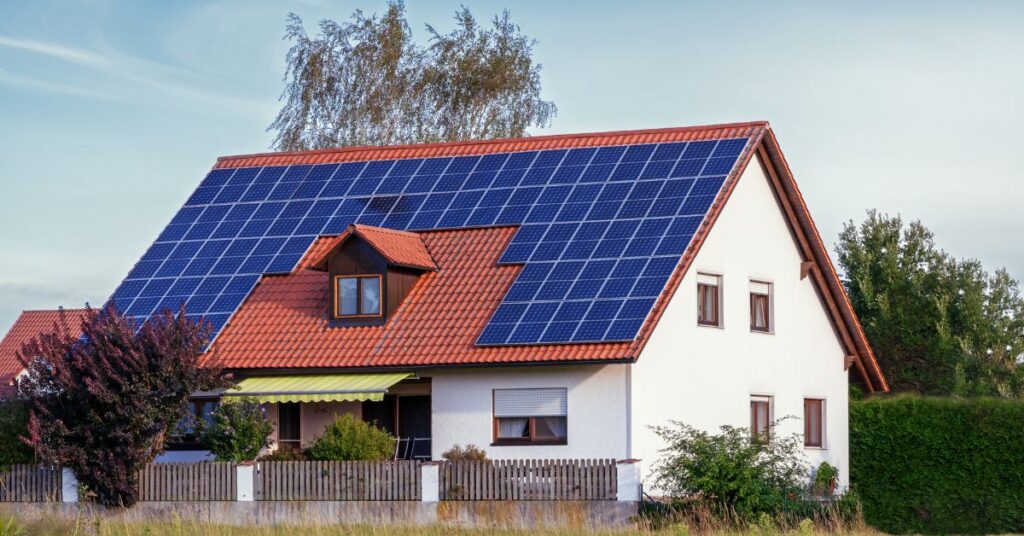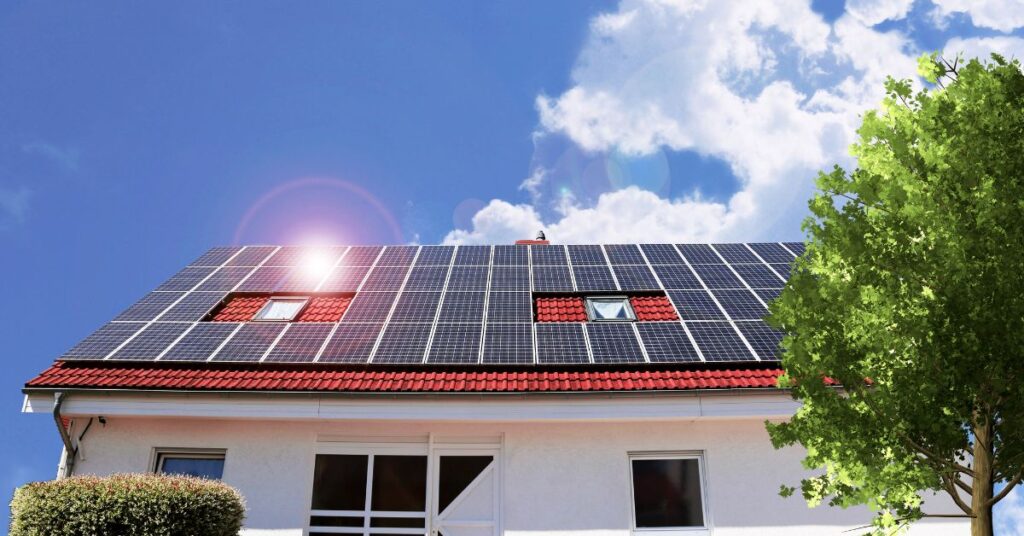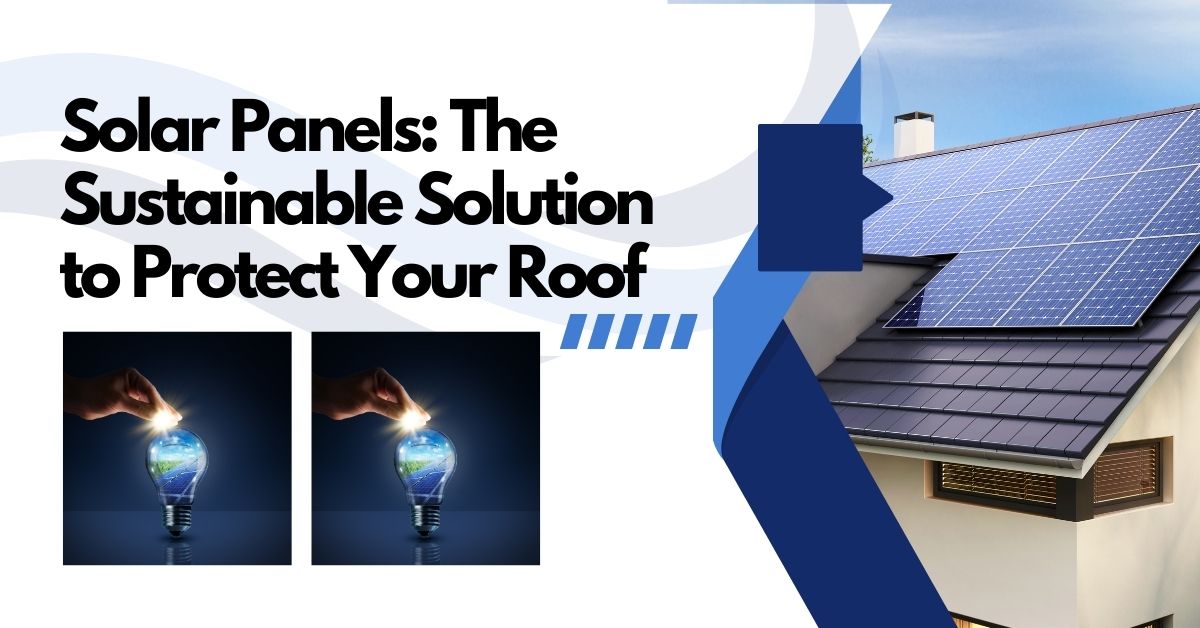Solar Panels: The Sustainable Solution to Protect Your Roof
Know the details about Solar Panels: The Sustainable Solution to Protect Your Roof, Discover how solar panels not only generate clean energy but also protect and enhance the durability of your roof. At Solar Panels: The Sustainable Solution to Protect Your Roof, we provide insights into the benefits of solar energy, from reducing electricity bills to shielding your roof from the elements.
Learn about efficient installation, long-term savings, and eco-friendly solutions tailored to your needs. Whether you’re looking to lower your carbon footprint or extend the lifespan of your roof, our resources guide you through every step toward a greener future with solar power.
Table of Contents
Solar Panels: The Sustainable Solution to Protect Your Roof
Introduction: Solar Power and Sustainable Roofing
In recent years, solar energy has become an increasingly popular option for homeowners seeking both environmental and financial benefits. Solar panels often hailed for their ability to produce renewable energy, offer numerous advantages beyond clean electricity. For homeowners, a less commonly known advantage is the protection and extended lifespan they can offer to the roof.
This post will explore how solar panels are a sustainable solution not only for energy needs but also for enhancing the longevity of roofs. We’ll dive into the basics of solar energy, the relationship between solar panels and roofing, potential benefits, and frequently asked questions about solar panel installations.
Understanding Solar Panels and Their Environmental Benefits

- How Solar Panels Work
Solar panels are made up of photovoltaic (PV) cells, which convert sunlight into direct current (DC) electricity. This electricity is then converted by an inverter into alternating current (AC), which powers household appliances. By using sunlight—a free and renewable resource—solar panels generate electricity without emitting greenhouse gases, unlike fossil fuels. - Reducing Carbon Footprint
The average household can offset tons of carbon dioxide emissions annually by switching to solar energy. A well-functioning solar system can prevent several thousand pounds of CO₂ from entering the atmosphere each year. - Promoting Renewable Energy Transition
The global shift to renewable energy sources is essential for mitigating climate change. Solar panels contribute to this shift by reducing dependency on nonrenewable energy sources and minimizing harmful environmental impacts.
The Protective Benefits of Solar Panels for Roofs
- Shielding from UV Rays
Solar panels absorb sunlight that would otherwise hit the roof. This shields the roofing material from the harmful effects of UV rays, which can degrade shingles, tiles, and other roofing materials over time. - Temperature Regulation and Insulation
Solar panels create a gap between themselves and the roof, providing an additional layer that can moderate temperature fluctuations. This “shade” effect can help regulate temperatures inside the home, especially in hot climates. By reducing extreme heat absorption, solar panels indirectly protect the roof, preserving its structural integrity. - Protecting Against Weather Conditions
Solar panels act as a barrier between the elements and the roofing materials, shielding them from rain, snow, and hail. High-quality solar panels are designed to withstand harsh weather, which means that they protect the roof from direct exposure to these elements, preventing premature wear and tear. - Minimizing Roof Maintenance Needs
By covering and protecting portions of the roof, solar panels can reduce the frequency and extent of maintenance needed. Roofs with solar installations tend to require fewer repairs, as a large section of the roof is shielded from direct exposure.
Financial Benefits of Solar Panels and Roof Protection

- Saving on Energy Bills
Solar panels generate electricity, which can drastically reduce or even eliminate monthly electricity bills depending on the size of the system. With net metering or energy storage options, homeowners can maximize savings by either storing excess power for later use or selling it back to the grid. - Increasing Property Value
Homes equipped with solar panels often have higher market values than comparable non-solar properties. This added value, coupled with lower energy costs, makes solar a long-term investment that benefits the homeowner financially. - Reducing Roof Replacement Costs
By extending the lifespan of the roof, solar panels reduce the need for frequent roof replacements or repairs. This is particularly beneficial in areas with extreme weather, where roofing materials might otherwise deteriorate quickly. - Incentives and Tax Credits
Many governments offer tax credits, rebates, and other incentives for solar panel installations, making the initial investment more affordable. These incentives are designed to encourage homeowners to adopt solar energy, benefiting both the homeowner and the environment.
Considerations for Solar Panel Installation on Roofs
- Roof Condition and Age
Before installing solar panels, it’s crucial to assess the current state of the roof. Installing solar panels on an older or damaged roof can lead to complications and additional costs down the line, as the roof may need repairs or replacement sooner. - Types of Roofing Materials and Solar Compatibility
Solar panels are compatible with most roofing materials, but some require special mounting equipment. Asphalt shingles, metal roofs, and tile roofs are generally more suitable for solar installations, while slate and wood roofs might require custom approaches or reinforcement. - Tilt and Orientation
The angle and direction of the roof can influence solar panel efficiency. South-facing roofs with a tilt of about 30 degrees typically offer the best sunlight exposure in the Northern Hemisphere. However, east- or west-facing roofs can still be viable, especially if the angle can be adjusted to optimize solar output. - Permits and Local Regulations
Local regulations, permits, and building codes vary by region, and it’s essential to work with a licensed installer who understands the specific requirements for your area. Solar panel installations must comply with zoning laws and safety standards.
Common Myths and Misconceptions about Solar Panels and Roofs

- Myth #1: Solar Panels Damage the Roof
Many people fear that installing solar panels will damage their roofs. In reality, a professional installation uses mounting systems that protect the integrity of the roof, sealing around attachments to prevent leaks. - Myth #2: Solar Panels Will Increase Roof Temperatures
While it’s true that solar panels absorb sunlight, they also create a gap between themselves and the roof. This gap reduces the heat that reaches the roof surface, acting as a protective shield against excessive temperature buildup. - Myth #3: You Can’t Install Solar Panels on Certain Types of Roofs
Advances in technology and mounting systems have made it possible to install solar panels on almost any type of roof. Metal, asphalt, tile, and even flat roofs can support solar panels with the right mounting technique. - Myth #4: Solar Panels Require Constant Maintenance
Solar panels are designed to be low-maintenance. They usually only require periodic cleaning to remove debris, dust, and grime. Snow generally slides off panels due to their smooth, angled surfaces, and rain helps wash away dirt.
FAQs about Solar Panels and Roof Protection
Conclusion: Solar Panels – A Smart and Sustainable Investment
Solar panels offer immense value by producing clean energy, reducing electricity costs, and contributing to a sustainable future. For homeowners, the added benefit of protecting the roof makes them an even smarter investment. By shielding the roof from harsh weather, UV rays, and temperature extremes, solar panels contribute to a longer roof lifespan and reduced maintenance needs.
Whether you’re motivated by environmental consciousness, energy savings, or property value, solar panels can provide a holistic solution that benefits both your home and the planet. Embracing this technology can make a lasting impact, both in terms of sustainability and practicality, ensuring that you enjoy the benefits of solar energy while preserving your roof for years to come.
Click here to learn more about Solar Panels: The Sustainable Solution to Protect Your Roof
Click here to learn more about How to Minimize the Environmental Impact of Solar Panel Waste

